Homegrown Horses Are Our Best Chance For Topping The Podium
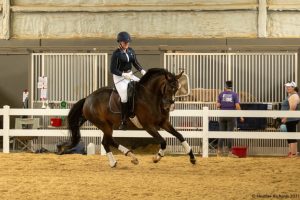 Out there on the interwebs this month were three Facebook posts that caught my eye. One was on a sales group for dressage horses, where someone called trainers to task: “What is it with trainers these days? Particularly in the USA,” she wrote. “How come no one is willing to put in the effort to help develop a good horse, and instead they just expect their clients to have the budgets to go and buy the finished product? I know there are a handful of good trainers that don’t get the recognition they deserve but it seems the majority aren’t willing to put the work in. Thoughts?” The replies were thoughtful, bringing a range of experiences to the table.
Out there on the interwebs this month were three Facebook posts that caught my eye. One was on a sales group for dressage horses, where someone called trainers to task: “What is it with trainers these days? Particularly in the USA,” she wrote. “How come no one is willing to put in the effort to help develop a good horse, and instead they just expect their clients to have the budgets to go and buy the finished product? I know there are a handful of good trainers that don’t get the recognition they deserve but it seems the majority aren’t willing to put the work in. Thoughts?” The replies were thoughtful, bringing a range of experiences to the table.
The second was from a Dressage-News.com article that quoted former team coach and Olympian Debbie McDonald saying, “I think we need more people able to bring along young horses with people who are willing to support them to do that.”
And the third was a Facebook post by six-time Olympian and former team coach Robert Dover, lamenting a lack of ownership support for international horses grown here in the U.S.
Read the rest at The Chronicle of the Horse!
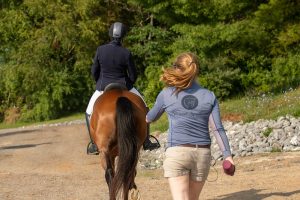 It’s a time of year when the horse job market is flooded with new graduates, both high schoolers not advancing on to college or those taking a gap year, and college grads, some from equine studies-adjacent programs, some not. We professionals in the equine business need support staff, whether it’s grooms or working students or vet techs or farrier’s assistants. There’s no barn-to-barn consistency in what one of those positions looks like, in the same way that being a server at TGI Fridays and a server at the nicest restaurant in Manhattan aren’t the same type of position. And with barns, just like restaurants, there are great ones and there are crappy ones, run by great people, run by crappy people.
It’s a time of year when the horse job market is flooded with new graduates, both high schoolers not advancing on to college or those taking a gap year, and college grads, some from equine studies-adjacent programs, some not. We professionals in the equine business need support staff, whether it’s grooms or working students or vet techs or farrier’s assistants. There’s no barn-to-barn consistency in what one of those positions looks like, in the same way that being a server at TGI Fridays and a server at the nicest restaurant in Manhattan aren’t the same type of position. And with barns, just like restaurants, there are great ones and there are crappy ones, run by great people, run by crappy people.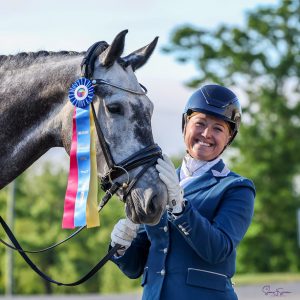 Tjornelys Solution DWB—”Beaker,” in the barn—is one of the best talents of my career. Owned by Clearwater Farm Partners, he’s 6 years old, and came into my life in February of this year with a stellar pre-purchase exam, three exquisite gaits, a clear understanding of the connection from leg to seat to hand, and a clean flying change. The FEI 6-Year-Old test is roughly equivalent to third level, calling for collection, flying changes, the third level lateral work of shoulder-in and half-pass.
Tjornelys Solution DWB—”Beaker,” in the barn—is one of the best talents of my career. Owned by Clearwater Farm Partners, he’s 6 years old, and came into my life in February of this year with a stellar pre-purchase exam, three exquisite gaits, a clear understanding of the connection from leg to seat to hand, and a clean flying change. The FEI 6-Year-Old test is roughly equivalent to third level, calling for collection, flying changes, the third level lateral work of shoulder-in and half-pass.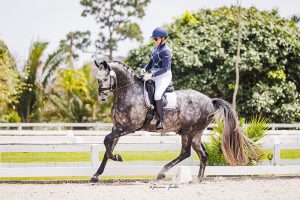 A million years ago, in a time of much healthier knees, I did triathlons. If you’ve never stood next to me, I’m 5’10” and built like a refrigerator, so when I tell you I did triathlons, I did them slowly, and I did the shortest distance class: a sprint, which is usually about a half-mile swim, 15-mile bike, and 3.1-mile run. I could do one in about two hours. Competition in these things is often by age group, but because I’m no pixie, I competed in something called the Athena division, for female athletes over 165 pounds. (Lest you were curious, the men’s division, for athletes over 200 pounds, is called the Clydesdale division.)
A million years ago, in a time of much healthier knees, I did triathlons. If you’ve never stood next to me, I’m 5’10” and built like a refrigerator, so when I tell you I did triathlons, I did them slowly, and I did the shortest distance class: a sprint, which is usually about a half-mile swim, 15-mile bike, and 3.1-mile run. I could do one in about two hours. Competition in these things is often by age group, but because I’m no pixie, I competed in something called the Athena division, for female athletes over 165 pounds. (Lest you were curious, the men’s division, for athletes over 200 pounds, is called the Clydesdale division.)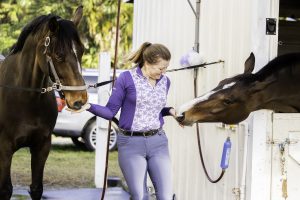 Cadeau, my top horse, has weird feet. They’re small and a little upright, and like everything that comes from Europe, he struggled a bit to adjust to the concrete block that is the ground in a Virginia summer. One of the 10 million reasons I use my excellent farrier Sean Crocker is because he believes in the team approach: He listens to my also-excellent sports medicine veterinarian Dr. Cricket Russillo, and he listens to me when I tell him how the horses are going.
Cadeau, my top horse, has weird feet. They’re small and a little upright, and like everything that comes from Europe, he struggled a bit to adjust to the concrete block that is the ground in a Virginia summer. One of the 10 million reasons I use my excellent farrier Sean Crocker is because he believes in the team approach: He listens to my also-excellent sports medicine veterinarian Dr. Cricket Russillo, and he listens to me when I tell him how the horses are going.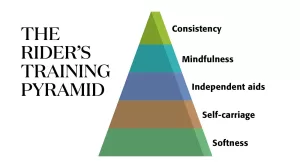 Sometimes my team and I are really rolling, with lots of horses and humans showing and getting somewhere and grinding it out. Other times, the youngsters are all youngstering, and I didn’t book a lot of clinics in January and February because the weather usually stinks, and we’re mostly just logging miles and waiting for something to happen. This is one of those times. But it’s meant that I’ve had time—time to go and watch the warmup at the CDIs, time to get caught up on office work, and time to do some continuing education.
Sometimes my team and I are really rolling, with lots of horses and humans showing and getting somewhere and grinding it out. Other times, the youngsters are all youngstering, and I didn’t book a lot of clinics in January and February because the weather usually stinks, and we’re mostly just logging miles and waiting for something to happen. This is one of those times. But it’s meant that I’ve had time—time to go and watch the warmup at the CDIs, time to get caught up on office work, and time to do some continuing education.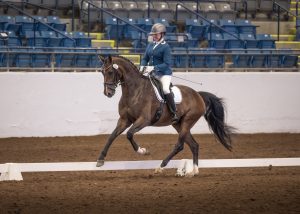 We’ve all been reading about the sales of international Grand Prix horses to new riders lately because, in order to qualify for an Olympics under Fédération Equestre International rules, a horse has to have at least one owner of the same nationality as its rider by Jan. 15 of the Games year. That deadline was Monday, and many investors both in the U.S. and abroad have made major purchases in the past month or so to bolster their riders’ chances of securing an elusive team spot.
We’ve all been reading about the sales of international Grand Prix horses to new riders lately because, in order to qualify for an Olympics under Fédération Equestre International rules, a horse has to have at least one owner of the same nationality as its rider by Jan. 15 of the Games year. That deadline was Monday, and many investors both in the U.S. and abroad have made major purchases in the past month or so to bolster their riders’ chances of securing an elusive team spot.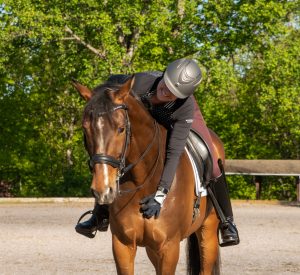 In Lauren’s Magical Universe of Joy and Rainbows, when I sell a horse, I get to take all that money and go get a new horse or two. While I don’t do sales for a living, and I don’t buy horses with the goal of resale, sometimes the young horses I bring up the levels don’t get far enough up the levels, or don’t get me to my goal of big, hairy, international things, and that means they get to be schoolmasters for other people. And then I have a chunk of change in my hand.
In Lauren’s Magical Universe of Joy and Rainbows, when I sell a horse, I get to take all that money and go get a new horse or two. While I don’t do sales for a living, and I don’t buy horses with the goal of resale, sometimes the young horses I bring up the levels don’t get far enough up the levels, or don’t get me to my goal of big, hairy, international things, and that means they get to be schoolmasters for other people. And then I have a chunk of change in my hand.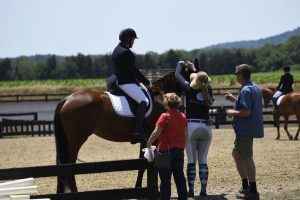 One of my favorite things about dressage is that there are so many ways to play. Schooling shows, recognized shows, little local ones, big hairy international ones, everything in between. There’s room in our sport for the person with the day job who are weekend warriors with their rescue pony, and there’s room in our sport for the independently wealthy with time and resources to ride at the top level. There’s room for the professional who teaches people how to do their first tests, and there’s room for the professional who brings them to the international ring. There’s lots of room.
One of my favorite things about dressage is that there are so many ways to play. Schooling shows, recognized shows, little local ones, big hairy international ones, everything in between. There’s room in our sport for the person with the day job who are weekend warriors with their rescue pony, and there’s room in our sport for the independently wealthy with time and resources to ride at the top level. There’s room for the professional who teaches people how to do their first tests, and there’s room for the professional who brings them to the international ring. There’s lots of room.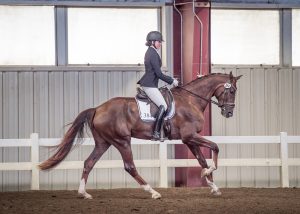 I bought Ojalá (Vitalis—Fienna, Sir Sinclair) from her breeder, Belinda Nairn, as a foal. She grew up in a field, learned to stand on crossties, lead, have a bath, be civilized. At 3, she was backed. She learned to walk, trot and canter on the bit like a lady, work with other horses in the ring, and hack out by the time I picked her, now 4, up in April of this year. I rode her and found her delightful, and then handed the keys to my wonderful assistant trainer, Ali Redston, who has a much greater affinity for the youngsters than I do. They went on an off-property outing, which was uninteresting. They went to a recognized show, where they performed admirably in two Materiale classes, and behaved to perfection.
I bought Ojalá (Vitalis—Fienna, Sir Sinclair) from her breeder, Belinda Nairn, as a foal. She grew up in a field, learned to stand on crossties, lead, have a bath, be civilized. At 3, she was backed. She learned to walk, trot and canter on the bit like a lady, work with other horses in the ring, and hack out by the time I picked her, now 4, up in April of this year. I rode her and found her delightful, and then handed the keys to my wonderful assistant trainer, Ali Redston, who has a much greater affinity for the youngsters than I do. They went on an off-property outing, which was uninteresting. They went to a recognized show, where they performed admirably in two Materiale classes, and behaved to perfection.